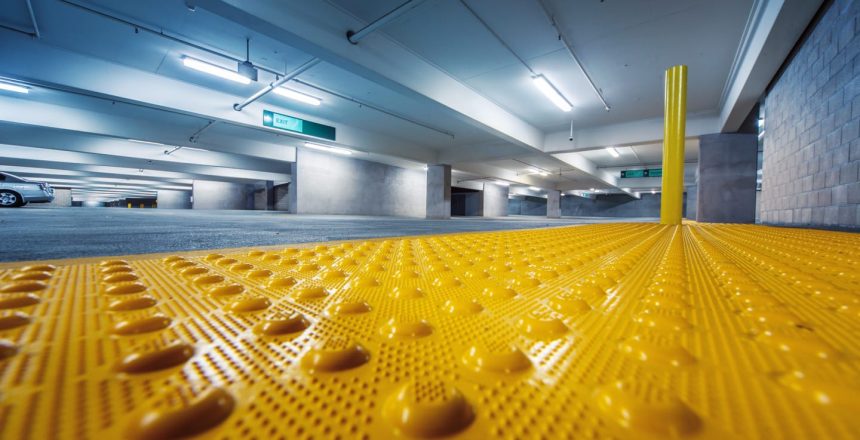Workplace safety starts with the one thing that sees the most use in your building: the floors. By working your way from the ground up (literally), you can ensure a safer work environment for every person. Floor safety means fixing and preventing any floor damage, as well as properly marking potential hazards.
Industrial flooring goes through constant extreme wear and tear. Foot traffic is one thing, but you also have to factor forklift traffic and other energized equipment. Other buildings or warehouses have busy loading docks, and the daily shipping and receiving process will only wear down floors faster.
Commonly, floors made of concrete will eventually deteriorate or crack. Floor safety issues also come from sliding or broken floor tiles, uneven floor surfaces, damaged bar grates, worn-out plywood, and adhesive failure on laminate flooring. Foremost, the No. 1 safety risk with damaged or worn out flooring is the trip hazard it creates. Employees can trip and fall from bumps, cracks, or other causes of damage to flooring, which can lead to injury.
Fixing any irregularities in your building’s flooring should happen as soon as possible to prevent any injury, damage, or hazard. Fortunately, preventing a lot of the most common flooring issues can be done with an epoxy flooring system. For an industrial environment, the pros of an epoxy floor outweigh the cons.
One main advantage is how cost effective epoxy floor coatings are. Because it can be directly installed onto existing concrete floors, installation costs are much lower. There is also a wide variety of colors and patterns possible, which can help add more light into the work environment.
Since safety is of the utmost importance, epoxy floors can withstand moisture, stains, grease, and even cracks. The protection that it provides helps in its durability. Epoxy floors have a longer lifespan than most other floor types, partially because they are highly resistant to oil, gasoline, bleach, and other fluids.
Another requirement for floor safety is to follow the Occupational Safety and Health Administration’s floor marking requirements. For example, permanent aisles and passageways need to be appropriately marked. Lines should be between 2-6 inches wide, and aisles should be at least 4 feet wide.
These floor markings should also indicate potential hazards or dangerous areas. Line can separate workers from machines and other moving equipment, allowing clear traffic lanes for machinery like forklifts. Phosphorescent floor markings can even help employees find exits during emergencies and other low-light situations.
There are many steps you can take to protect your industrial floors, and D.C. Byers Company/Grand Rapids can help prevent that damage through any means necessary. Both commercial and residential buildings need to be safe for those inside.
To get a quote on your concrete or epoxy flooring needs, call DC Byers Company/Grand Rapids today at (616) 538-7300. Our experience and expertise allow us to assess the damage correctly and plan how to perform the repairs to allow you to use your space properly.
For concrete restoration and repair, DC Byers Company/Grand Rapids looks at all the factors contributing to the deterioration of the concrete. By understanding the underlying problems, we can start working on the most satisfying and cost-effective solutions.
